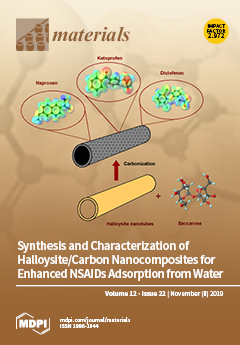This study focuses on the corrosion mechanism of carbon steel exposed to an artificial geothermal brine influenced by carbon dioxide (CO
2) gas. The tested brine simulates a geothermal source in Sibayak, Indonesia, containing 1500 mg/L of Cl
−, 20 mg/L
[...] Read more.
This study focuses on the corrosion mechanism of carbon steel exposed to an artificial geothermal brine influenced by carbon dioxide (CO
2) gas. The tested brine simulates a geothermal source in Sibayak, Indonesia, containing 1500 mg/L of Cl
−, 20 mg/L of SO
42−, and 15 mg/L of HCO
3− with pH 4. To reveal the temperature effect on the corrosion behavior of carbon steel, exposure and electrochemical tests were carried out at 70 °C and 150 °C. Surface analysis of corroded specimens showed localized corrosion at both temperatures, despite the formation of corrosion products on the surface. After 7 days at 150 °C, SEM images showed the formation of an adherent, dense, and crystalline FeCO
3 layer. Whereas at 70 °C, the corrosion products consisted of chukanovite (Fe
2(OH)
2CO
3) and siderite (FeCO
3), which are less dense and less protective than that at 150 °C. Control experiments under Ar-environment were used to investigate the corrosive effect of CO
2. Free corrosion potential (E
corr) and electrochemical impedance spectroscopy (EIS) confirm that at both temperatures, the corrosive effect of CO
2 was more significant compared to that measured in the Ar-containing solution. In terms of temperature effect, carbon steel remained active at 70 °C, while at 150 °C, it became passive due to the FeCO
3 formation. These results suggest that carbon steel is more susceptible to corrosion at the near ground surface of a geothermal well, whereas at a deeper well with a higher temperature, there is a possible risk of scaling (FeCO
3 layer). A longer exposure test at 150 °C with a stagnant solution for 28 days, however, showed the unstable FeCO
3 layer and therefore a deeper localized corrosion compared to that of seven-day exposed specimens.
Full article






